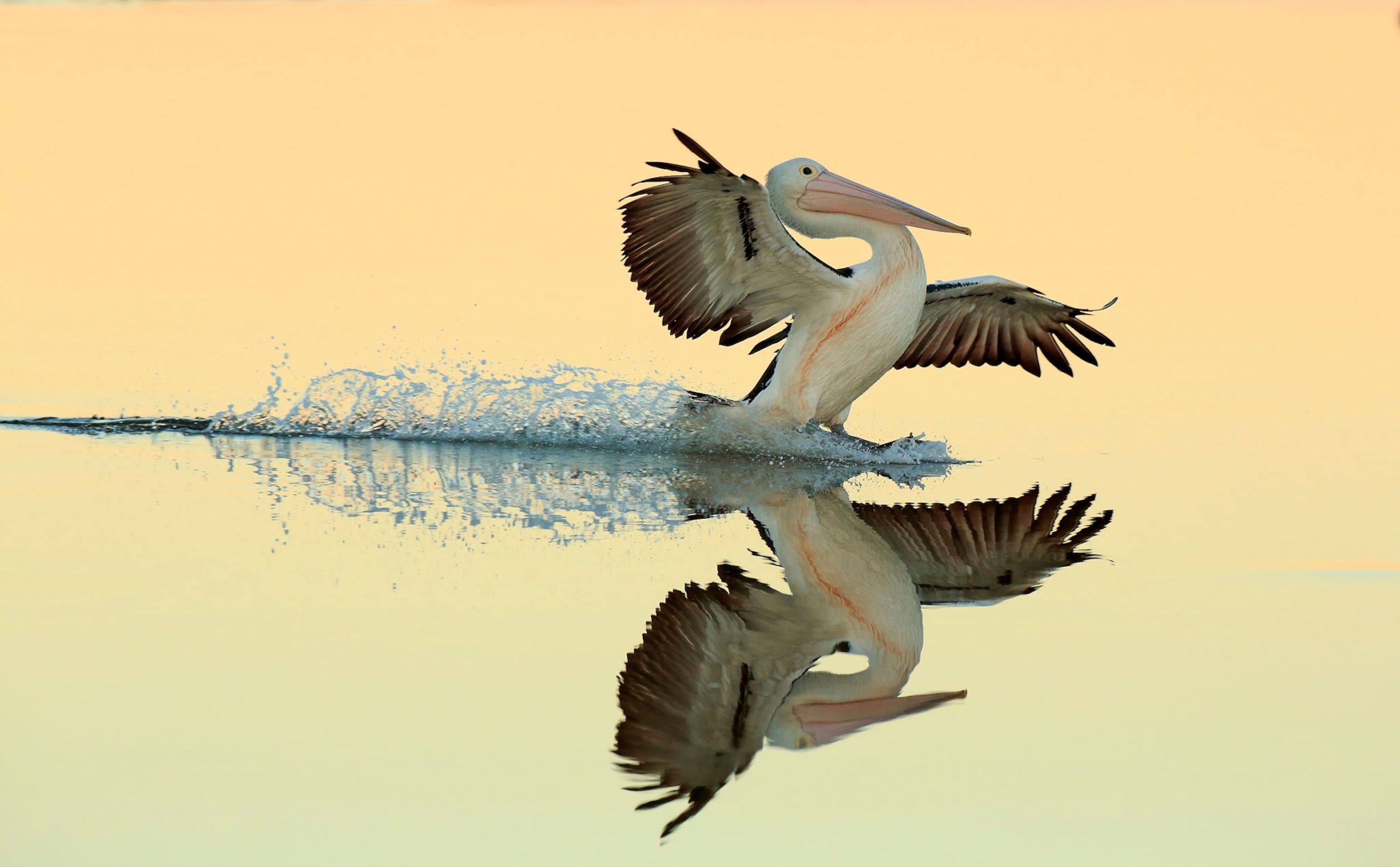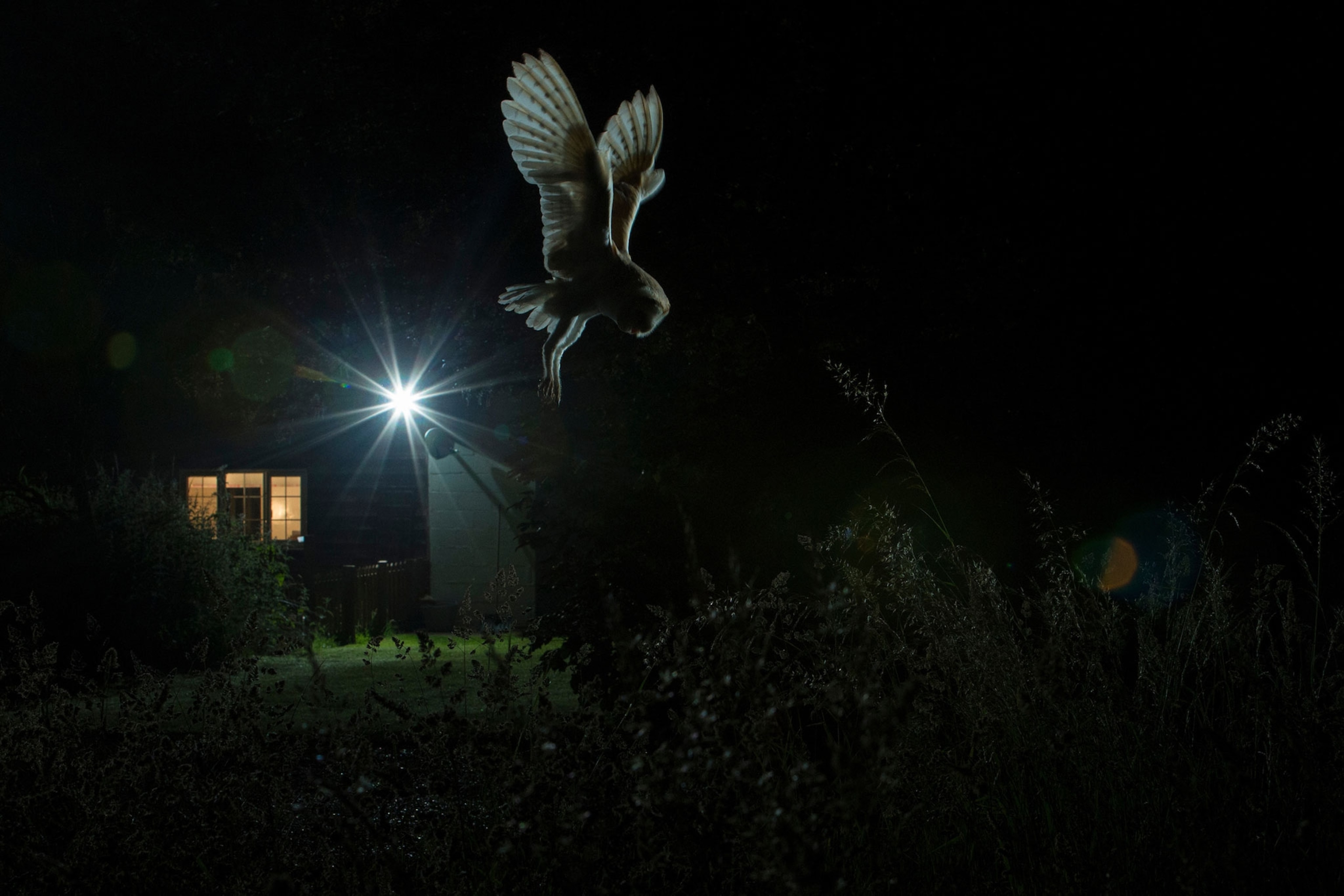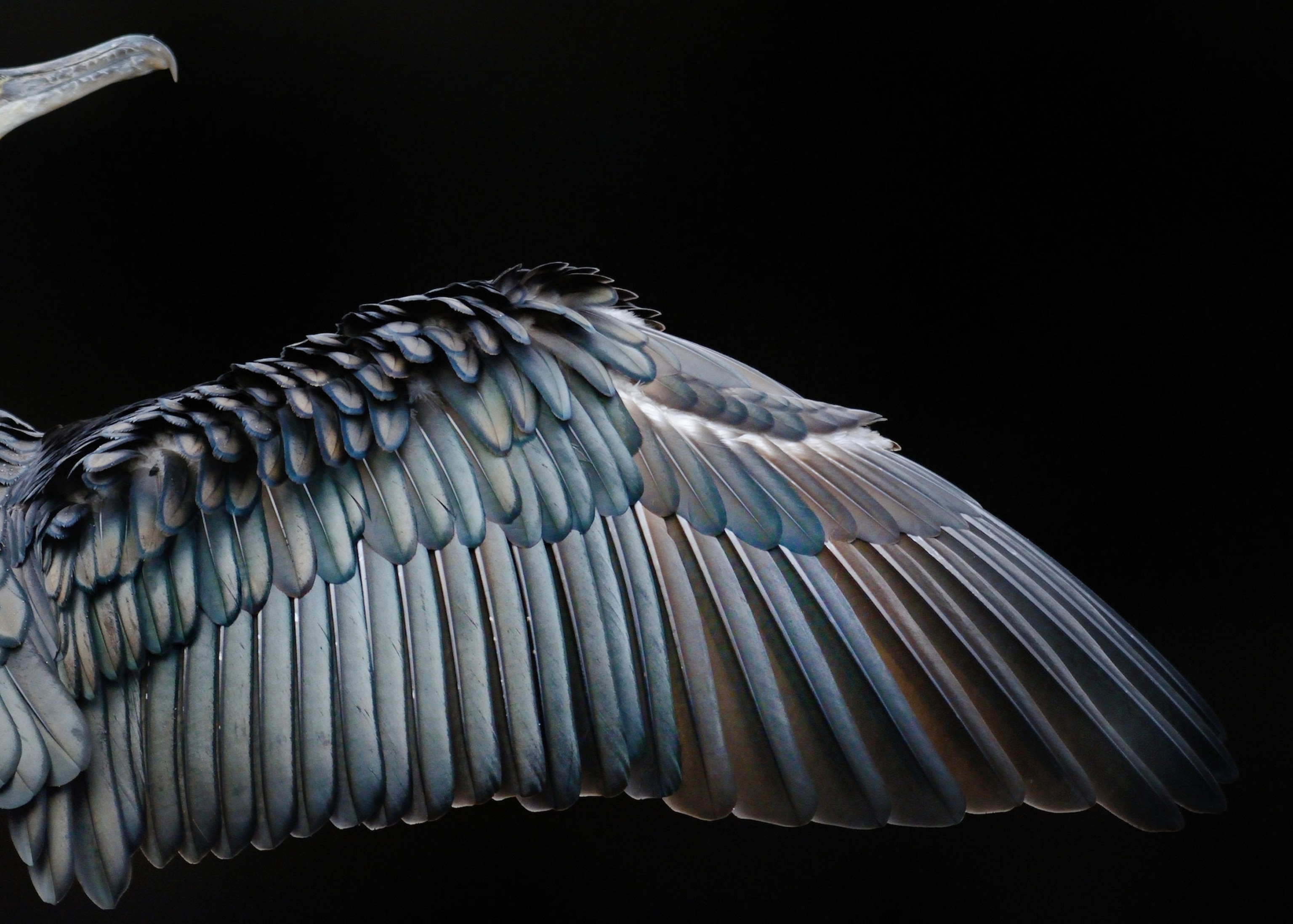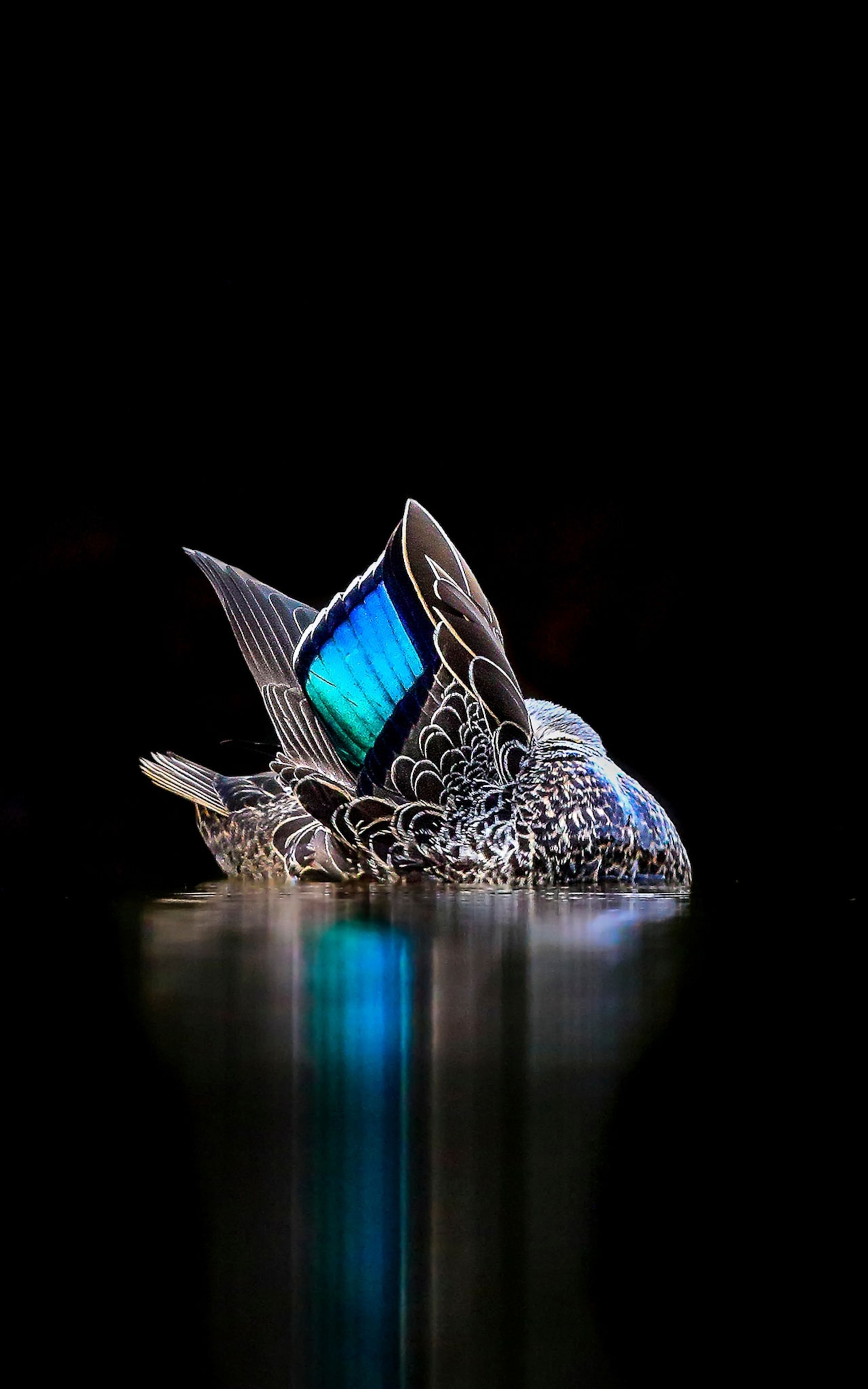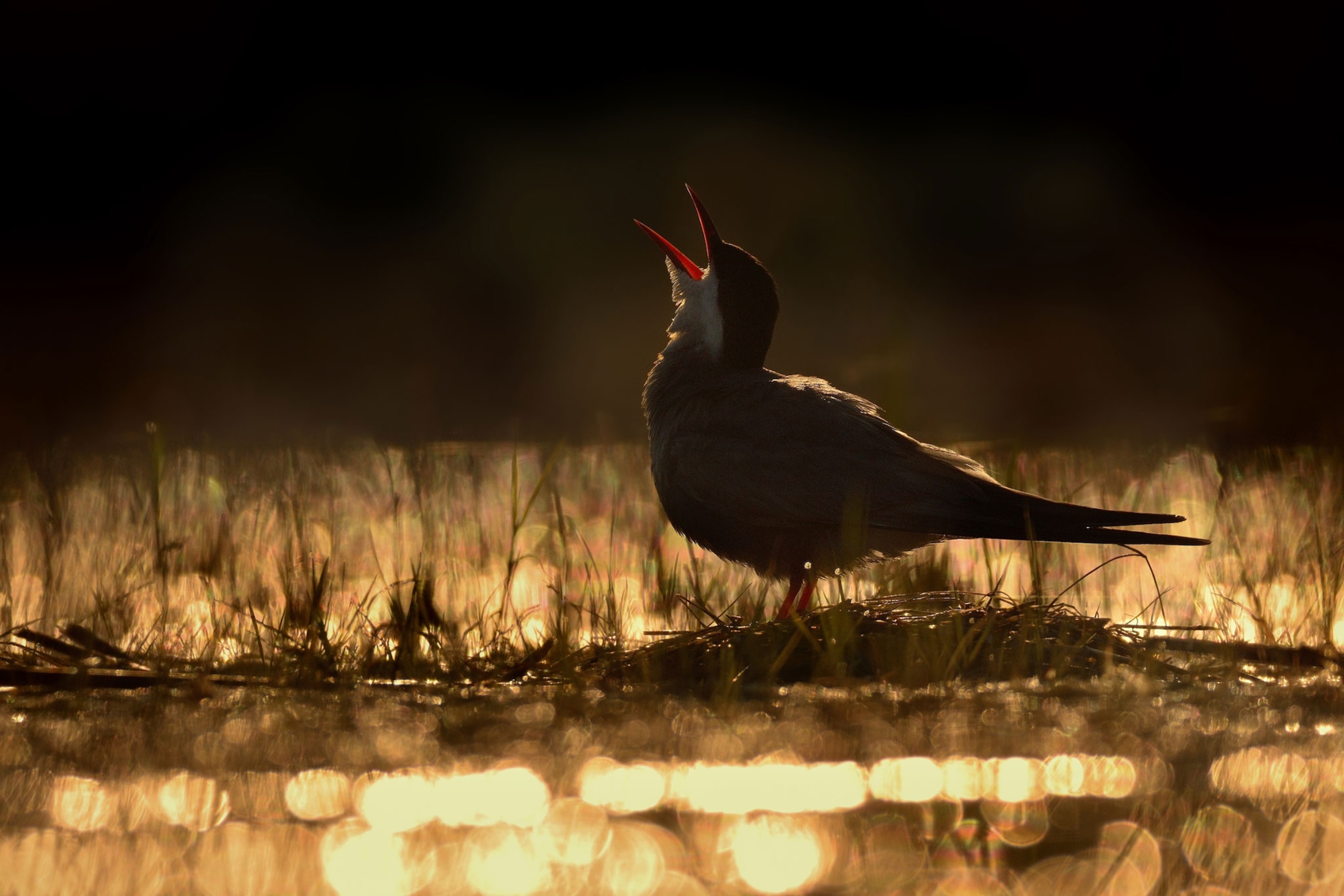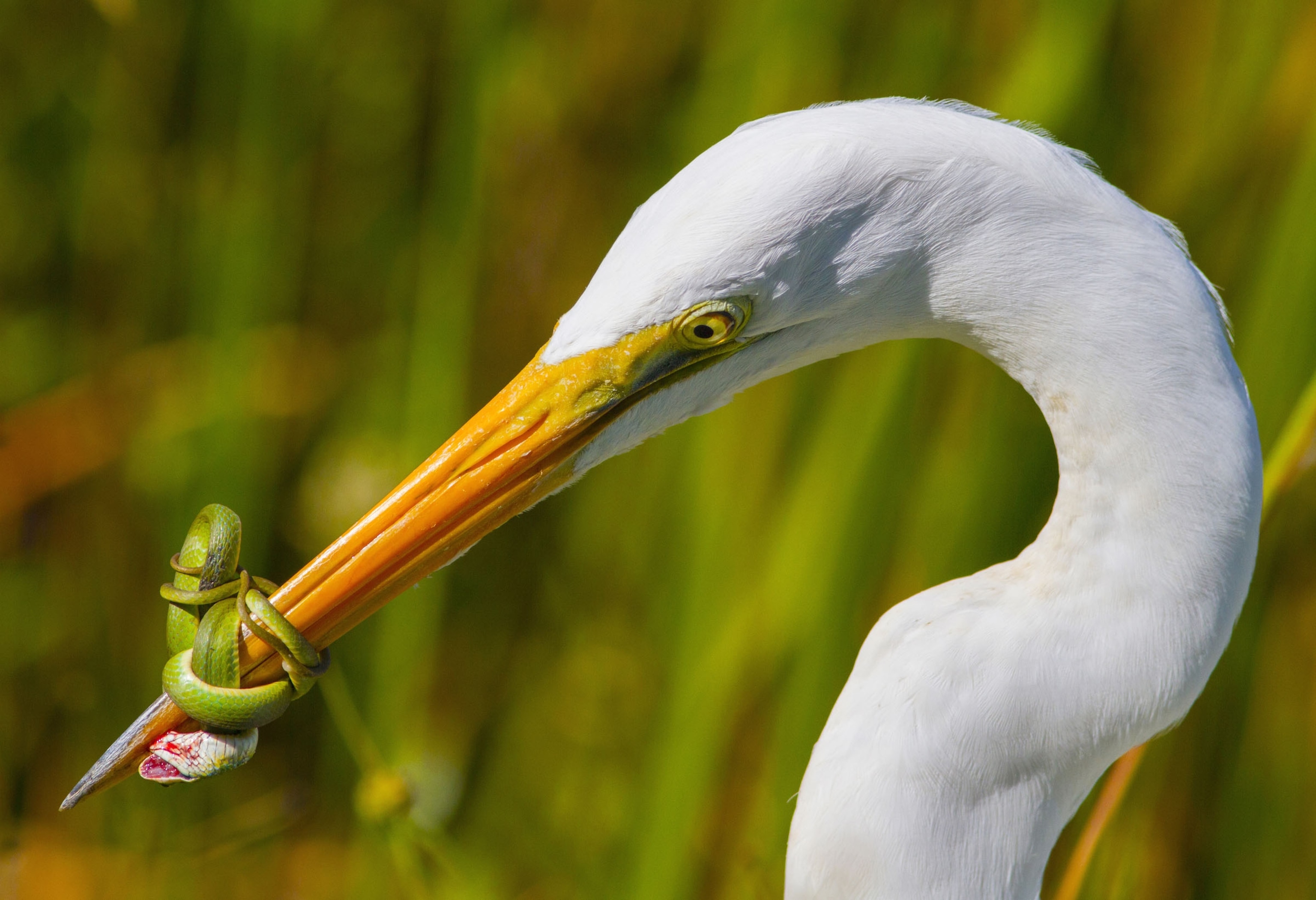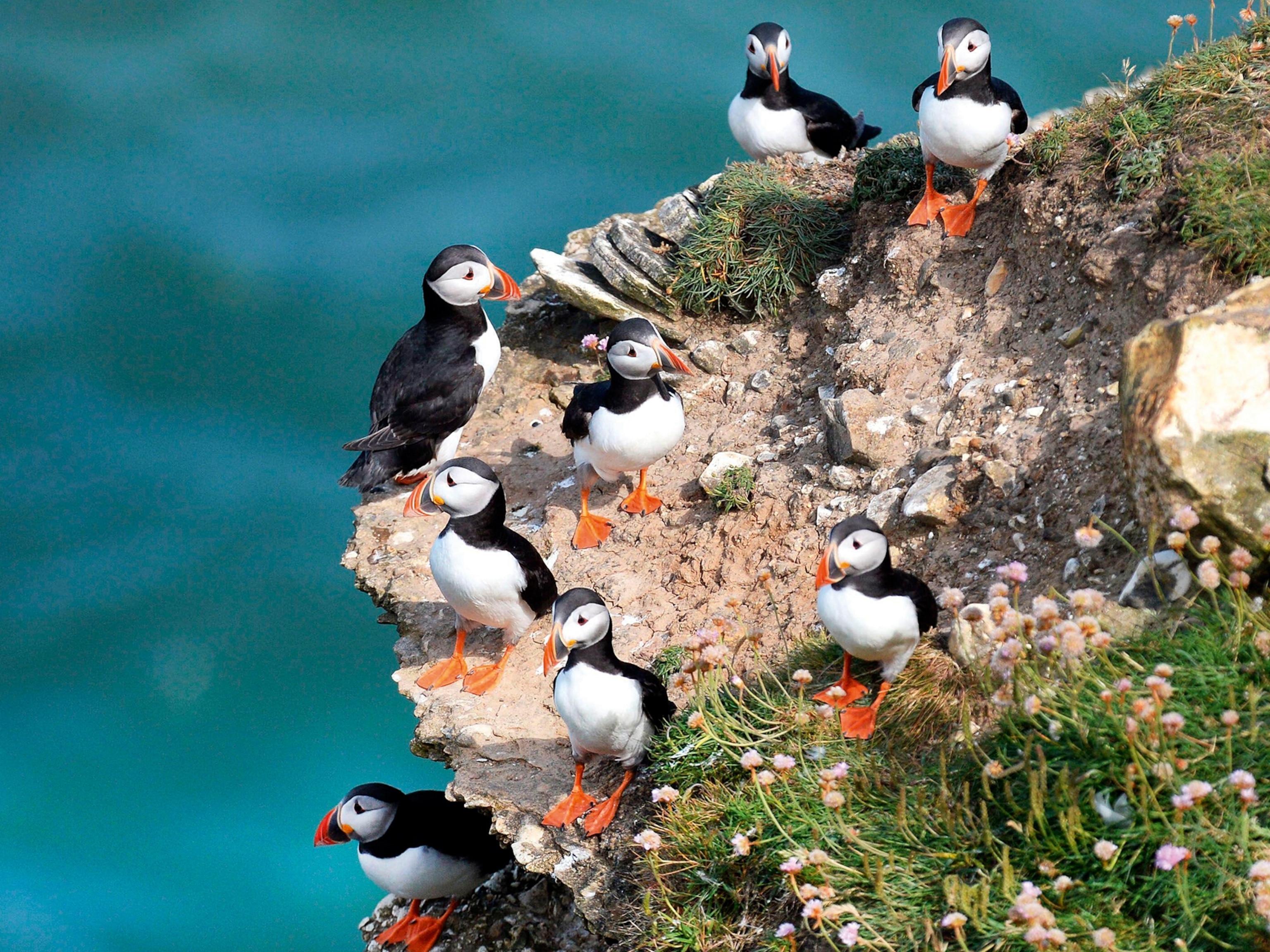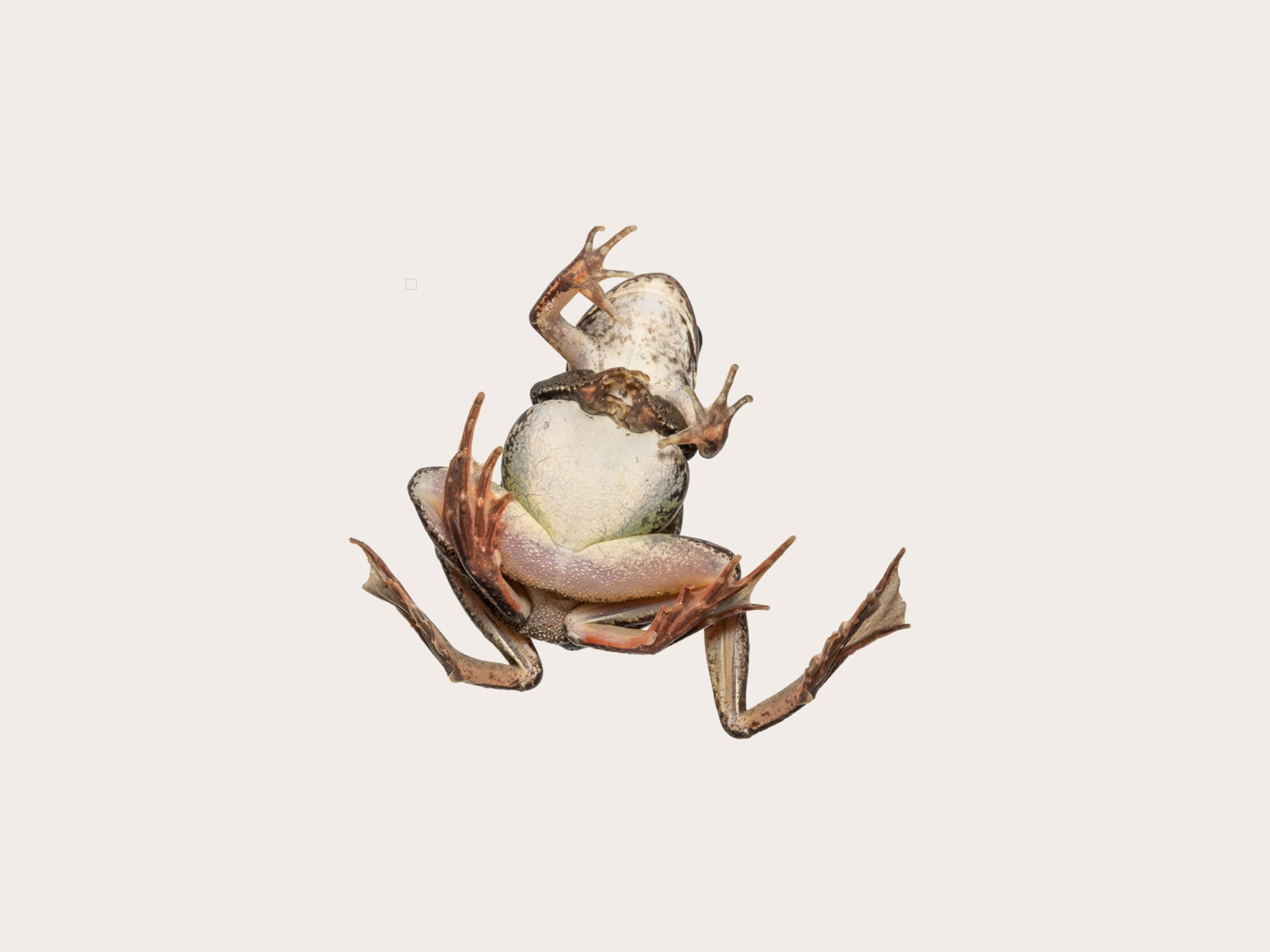Lonely Flamingo Mysteriously Appears in a Major City
Thousands of miles from its native habitat, the tropical bird could be a captive escapee.
The gift fluttered in on Valentine's Day—a single, pink flamingo splashing down under the shadows of downtown San Diego.
As of this week, the bird is still living in the San Diego Bay National Wildlife Refuge, home to some of the last vestiges of southern California's wild marshland and estuaries.
Most likely, the bird isn't a wayward traveler, lost in the midst of migration. Instead, "we think the bird is a fugitive," having escaped from a private collection says Andy Yuen, complex project leader at the refuge. (Read about a jet-black flamingo spotted in Cyprus.)
"It does have a band on its leg, and it looks like the flamingo has had its wings clipped in the past, but it is now fully flying."
According to Yuen, the American flamingo is happily foraging in the refuge's salt marsh, much of which consists of restored, shallow ponds that were once used for commercial production of salt.
In 2011, the U.S. Fish and Wildlife Service reintroduced tidal flow to those ponds, creating the perfect landing spot for migrating birds—including, apparently, flamingos.
Playing Nice
On the Yucatán Peninsula, Caribbean islands, and Andean Plateau, American flamingos flock to shallow, saline ponds by the thousands. In these native habitats, the birds feast on a diet of algae, brine shrimp, and plankton—the same foods that San Diego's sole flamingo and a host of other birds enjoy.
"Black skimmers, forester terns, double-crested cormorants, and the endangered California least tern all rest here," notes Yuen.
So far, the flamingo seems to be getting along with its neighbors. As long as that continues, the refuge plans to leave the bird alone. (Also see "How a Wayward Antarctic Seal Ended Up on a Brazilian Beach.")
"We haven't seen any conflicts or competition between the flamingo and some of the other native shorebirds that are foraging," he says.
Mysterious Origins
The bird is almost certainly a local, but it didn't come from the San Diego Zoo or SeaWorld, Yuen notes.
"We keep track of our flamingos," says Chuck Border, a senior bird keeper at the zoo. "We would know if one of ours was missing."
According to Border, most zoos pinion their flamingos, a process that involves removing a joint in the wing to disable flight. "When I saw the flamingo wasn't pinioned, I knew it wasn't from a zoo," he adds.
13 Amazing Pictures of Birds
Border says he first heard about the renegade flamingo through a local birding alert. "People are really excited. The local birders realize that it's [likely] an escapee from somewhere, but they're still eager to see it." (Read about why birds matter—and why we should protect them.)
No one is sure how long southern California's loneliest flamingo will stay, but for now, Yuen and his staff are happy to host it.
"Regardless of whether it flew up from Mexico or escaped from a location here in San Diego," he says, "we are giving it lots of love."



